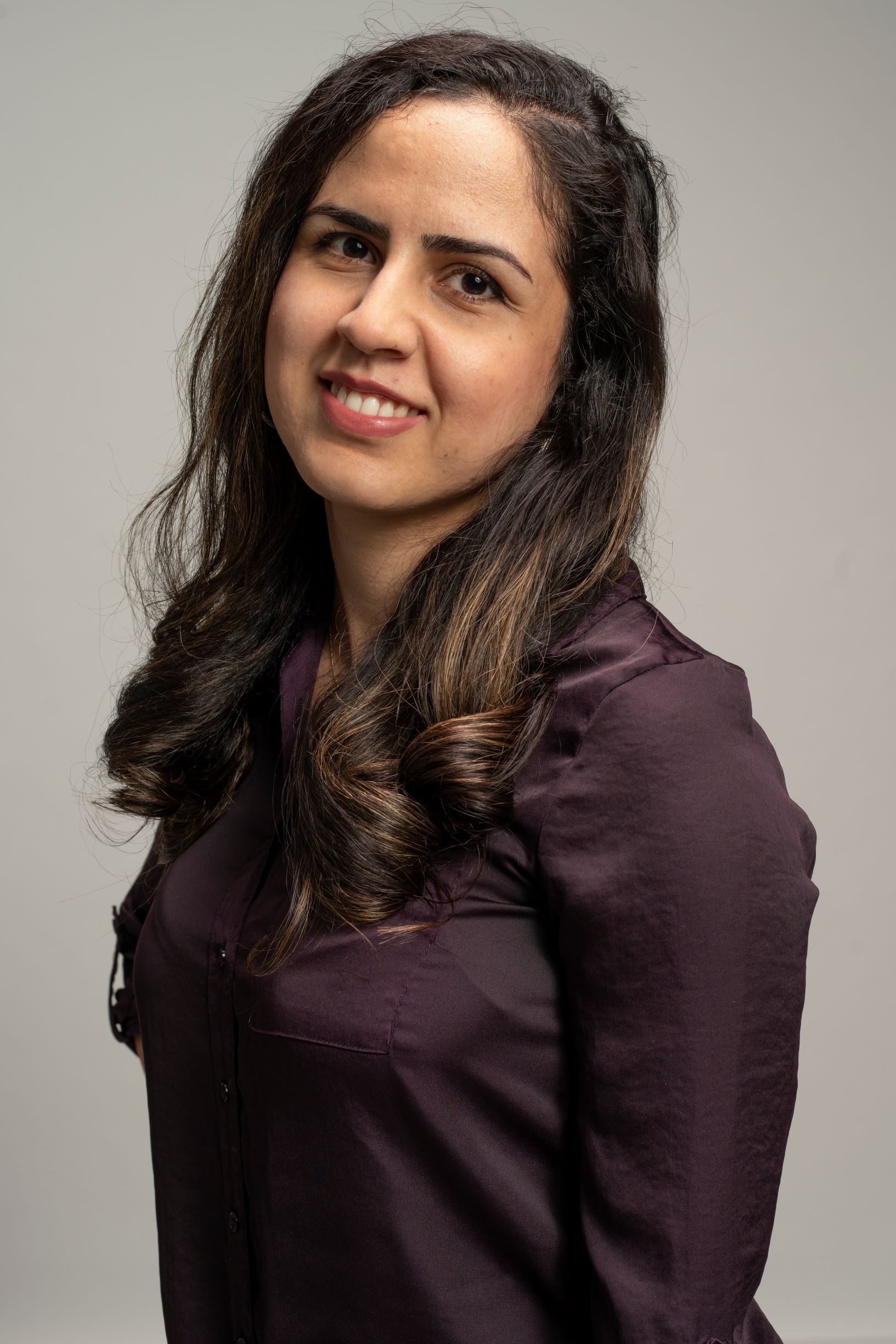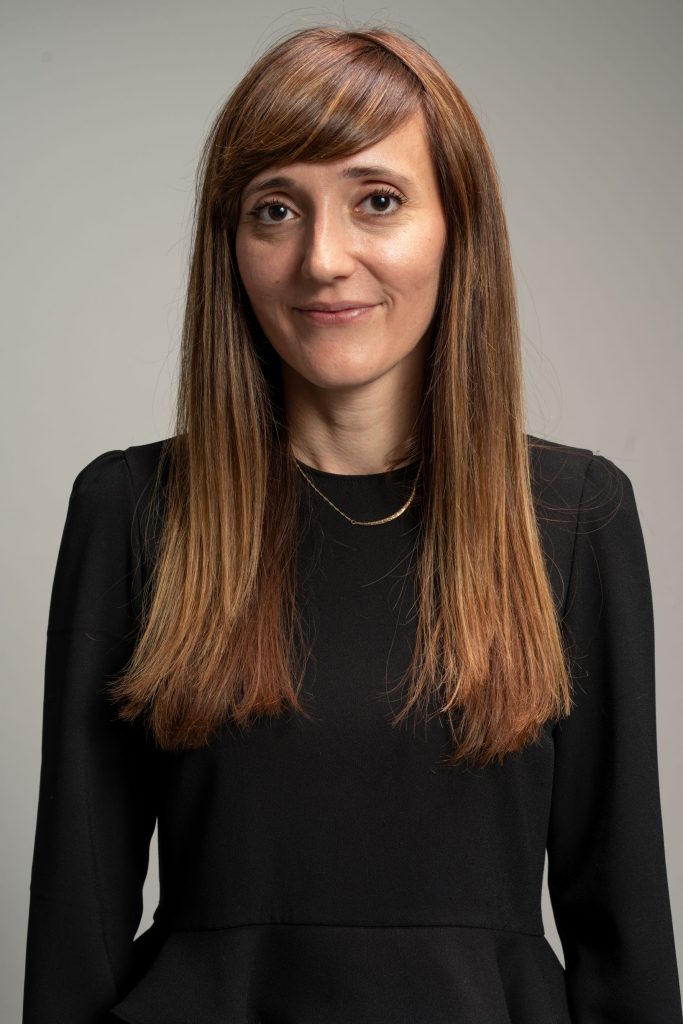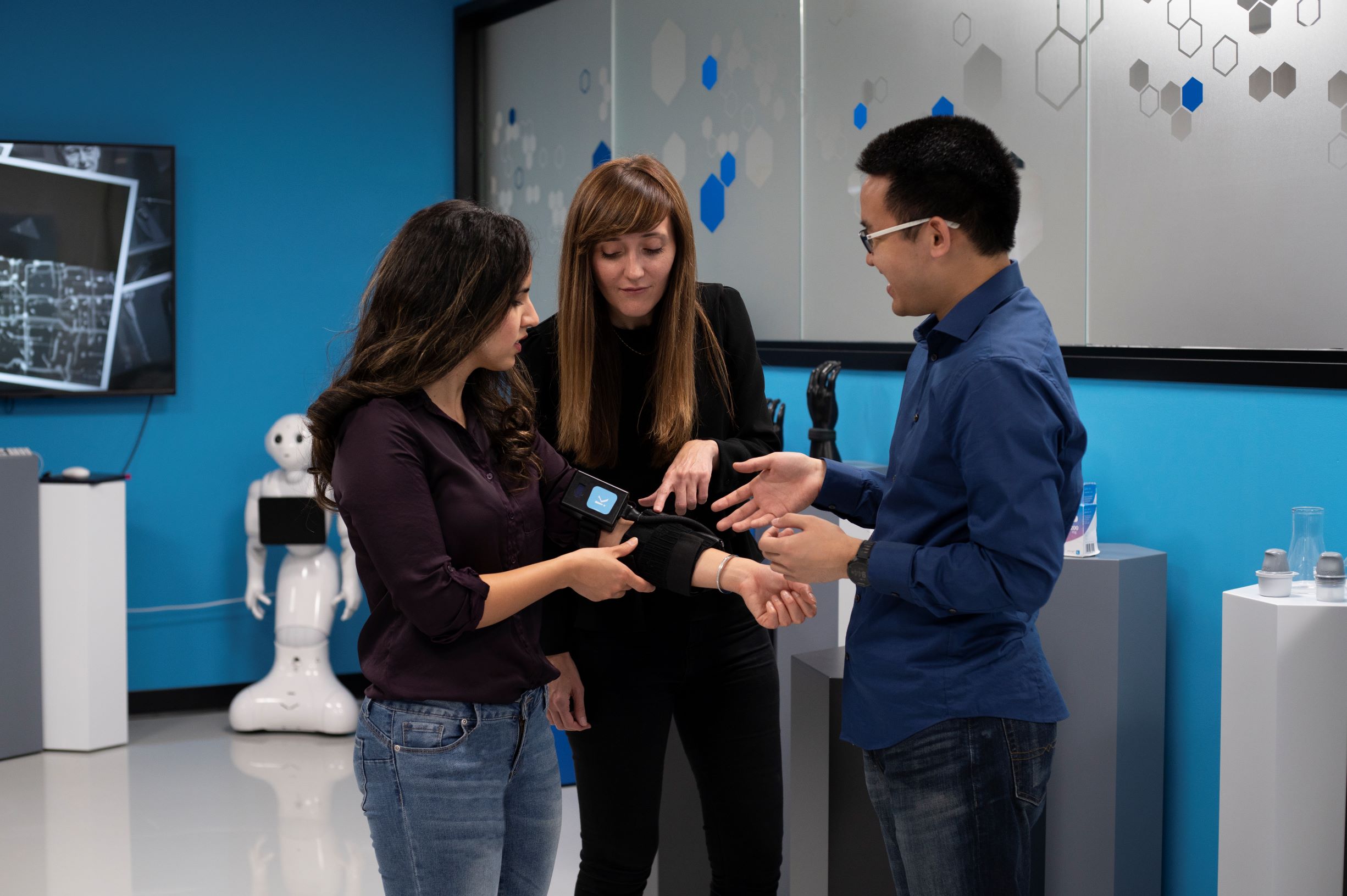
What research area did you pursue in your graduate education?
Sarah: I was in Dr. Azadeh Kushki’s lab between 2014 – 2016. We were studying how children with autism often have trouble expressing emotions, and tried to use alternative physiological metrics to gauge what they are feeling. Some of the parameters we measured were heart rate, respiration rate, body temperature, and electrical signals from the skin while they were exposed to various imageries. Using machine learning algorithms, we successfully showed there are patterns in physiological signals in various affective states.
Michael: I did my Masters with Dr. Babak Taati. We looked at Parkinson’s disease and tried to figure out whether we could use computer vision to automate some of the tests traditionally used by doctors to assess the severity of Parkinson’s symptoms, specifically involuntary movements. In current practice, a neurologist would ask a person with Parkinson’s to perform a series of tasks designed to show symptoms. These tasks would be rated by the neurologist to provide a disease severity score. The goal of our assessment was to give doctors more objective and frequent information, so that they could more accurately modify treatment regimens.
Marija: I finished my PhD in 2014 and I was co-supervised by neurologist Dr. Peter Carlen and engineer Dr. Berj Bardakjian. My work primarily focused on the study of epilepsy, and we were tasked with creating signal processing tools to localize where seizures start in the brains of patients with epilepsy.

How did graduate school prepare you for the transition into industry?
Sarah: In graduate school, I had to do a lot of MATLAB, and moving into industry made me aware that a lot of companies require an understanding of Python. So I started learning Python from multiple online sources and evolved from there. Having that self-starter mentality from graduate school really helped.
Michael: When I joined Klick Health, one of the projects the company was working on was their SymPulse™ Tele-Empathy Device that allows physicians and caregivers to experience tremors from a Parkinson’s patient. I happened to have worked on Parkinson’s during my Master’s thesis. Having that specialized knowledge was something that helped me get a foot in the door. The other valuable skillset was the ability to take a large amount of information that’s nebulous and synthesize it in a structured fashion. While I’ve been fortunate that the technical knowledge gained in graduate school has been transferrable, it’s really been the research method and attention to detail that have been most useful to me at Klick.

Marija: Coming from a science background really prepared me to work with scientific and medical content, which is a critical part of my role. A lot of our clients are pharmaceutical companies and part of my team’s role is to ensure the accuracy of all scientific and medical messaging. In graduate school, my focus was on the brain, but now I oversee work on multiple disease states. The ability to quickly and efficiently convey the science of various therapeutic areas and treatments is a reflection of my PhD education, where I was constantly evaluating, reviewing, and summarizing information. I think ultimately, graduate school teaches you how to solve problems in unclear situations and that set me up for success.
What is a cool project that you have worked on?
Sarah: I recently represented Klick at a conference to speak about some innovative research from our team. We were studying social media platforms, like Twitter, trying to detect adverse drug reactions based on what people were saying. Getting the right context out of people’s tweets can be a challenge, due to the non-formal languages, slang, and non-structured text they often use. We had to use text analysis and machine learning to figure out who was talking about an adverse reaction to a drug. The other challenge was the context of the tweet. For example, if someone said, “I took Advil because I had a headache”, the algorithm needed to understand that headache was not the side effect of Advil, it caused the person to take Advil in the first place.
Michael: There are a few cases where we showcased our in-house coding and artificial intelligence (AI) capabilities. We participated in the Blood Glucose Prediction challenge at a high-profile AI conference last year in Sweden. The organizers released a dataset from seven anonymous individuals with Type One Diabetes. The data included continuous blood glucose levels, life event data such as meals and sleep as well as biometrics like heart rate. Our goal was to see if we could use this information to predict changes in a person’s blood glucose level 30 minutes in advance, which would allow for proactive interventions to prevent hypo- or hyperglycemia.
Marija: Some of the most interesting projects I’ve worked on are mobile apps and Virtual Reality experiences for both patients and doctors. One of the mobile apps we created helps doctors quickly calculate non-standard doses for their patients and is also able to generate personalized calendars to help patients keep track of their medication throughout their treatment.
What are you working on now?
Sarah: I mainly study marketing activities aimed at each of our client’s various stakeholders like physicians. In doing so, we can ensure we optimize our content, and physicians are aware of drugs that are relevant to their prescriptions. We want to understand what physicians care about in their decision making.
Michael: We are trying to better understand how digital tools can be integrated with current practices to improve quality of care for patients and are encouraged by how in the United States, the FDA is becoming more open to clinical trials using some form of digital biomarker as a secondary outcome measure for diseases. Right now, we are seeing increased interest in digital therapeutics, where the treatment is administered through apps and online platforms, either standalone or as an adjunct to traditional therapies. As these new technologies enter the market, it’s essential to understand how different customer segments perceive these treatments and find the most efficient means to get them to the people who need them the most. We’re constantly working to stay ahead of the curve and understand how the pharmaceutical field is evolving.
Marija: As a Science & Regulatory Director, I work daily with my team and the extended team on healthcare marketing campaigns across multiple portfolios and clients. I travel to meet with our clients’ Medical, Legal and Regulatory teams. In terms of specific activities, our team ensures the editorial integrity and quality assurance of the materials we create for our clients. Often, we collaborate with our Medical Strategy team on content creation and strategic workshops for our clients. ■
For more information on joining Klick Health and being part of its ongoing success, double-digit growth, and award-winning culture, go to http://careers.klick.com.


